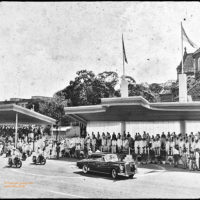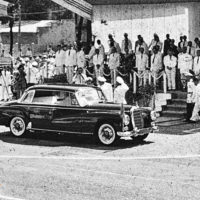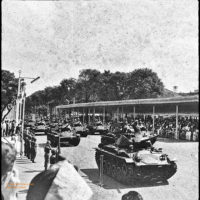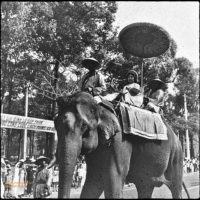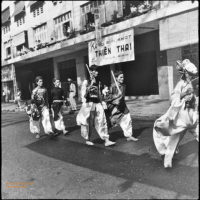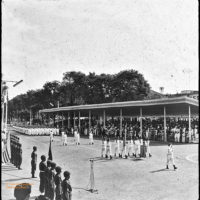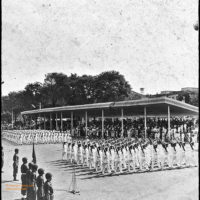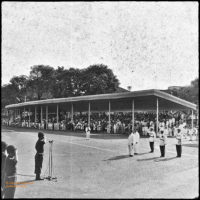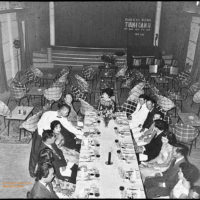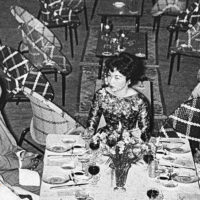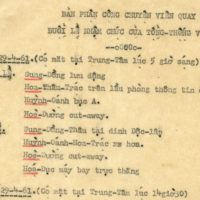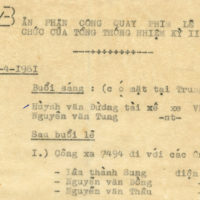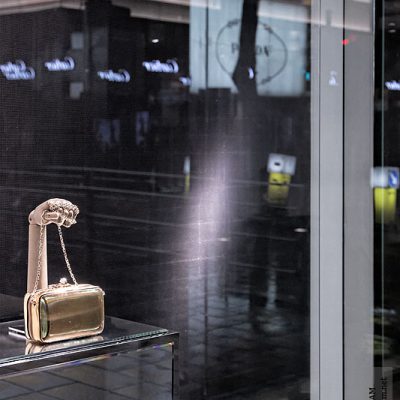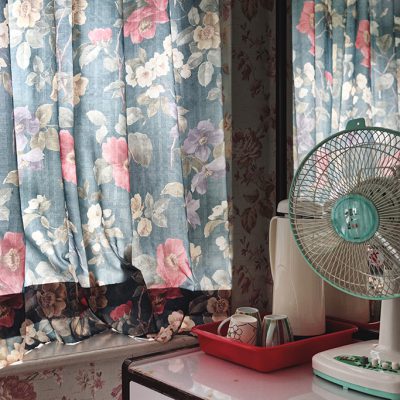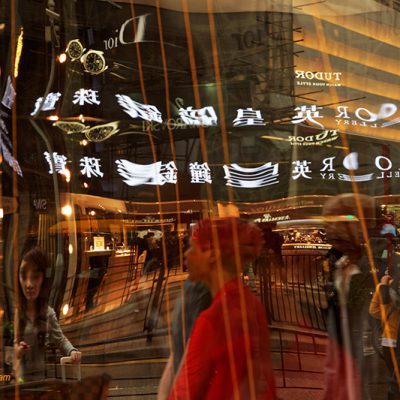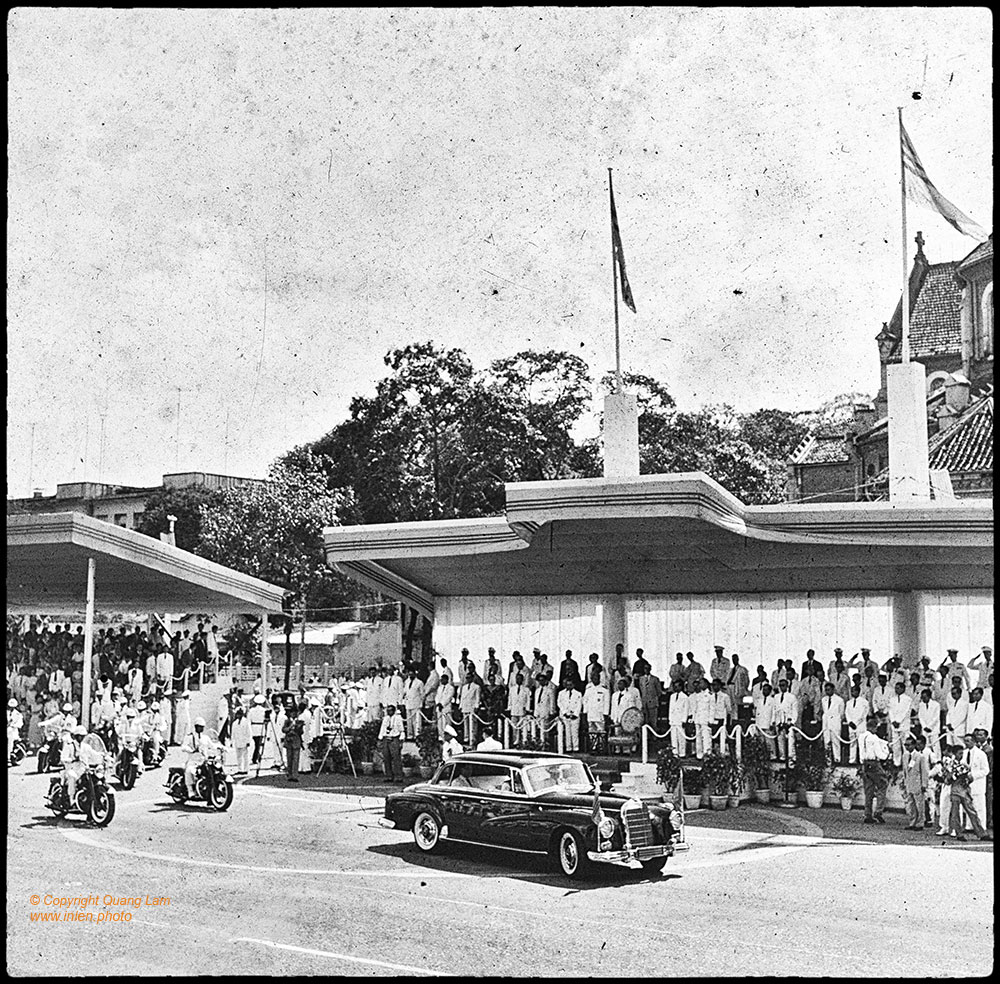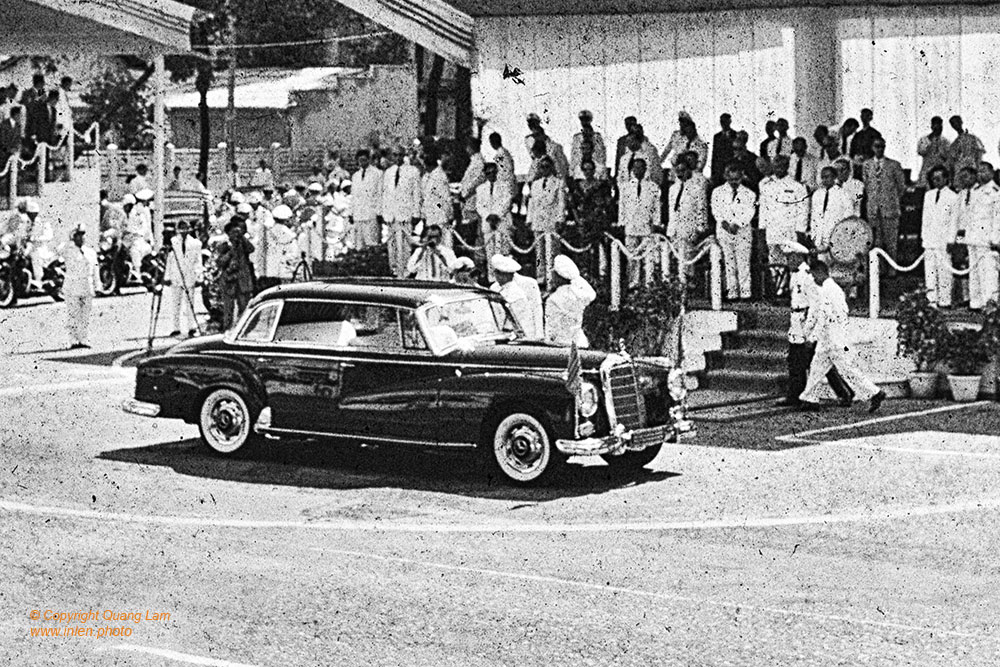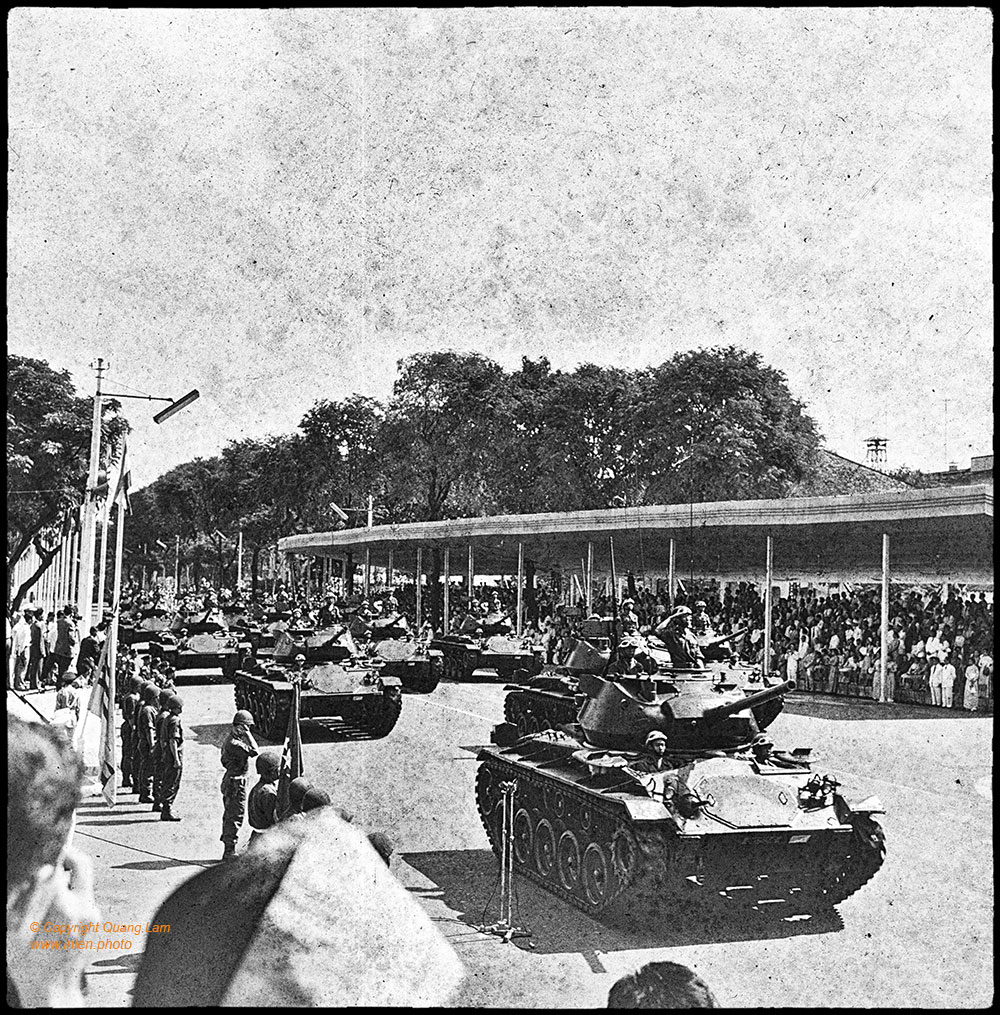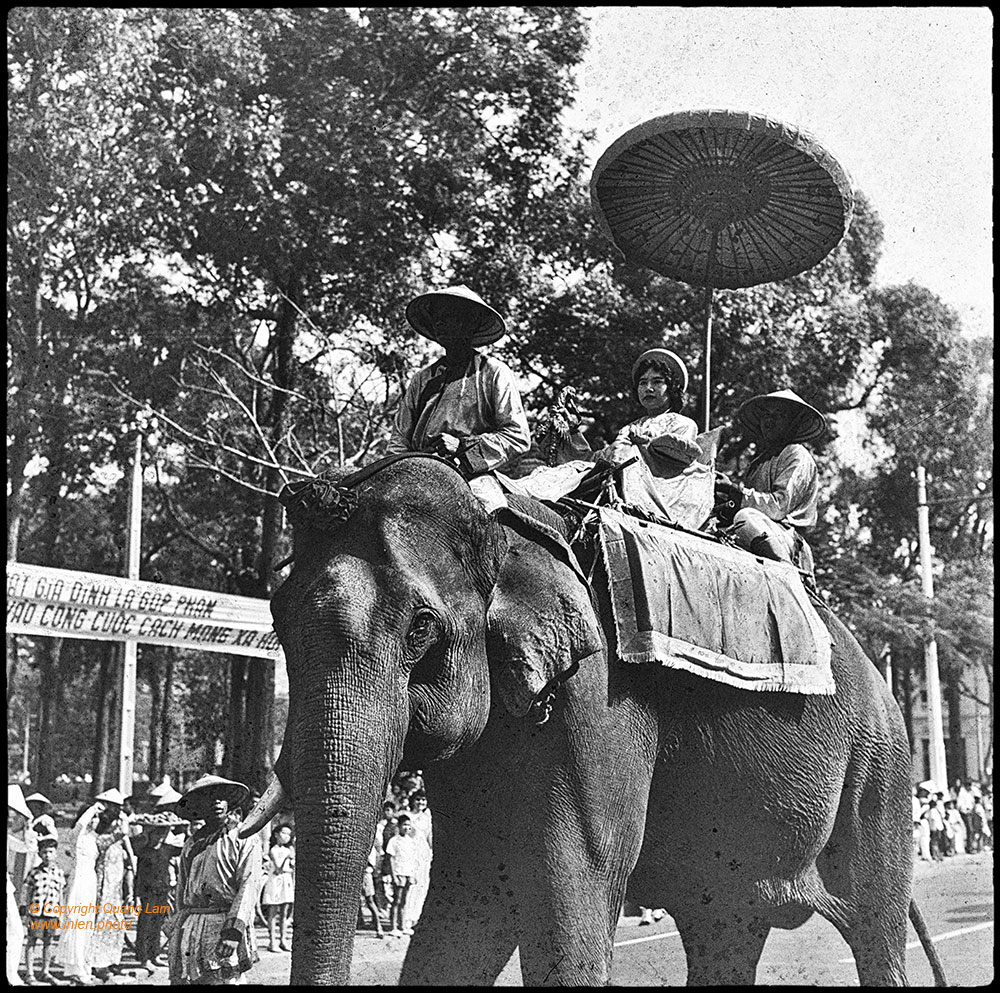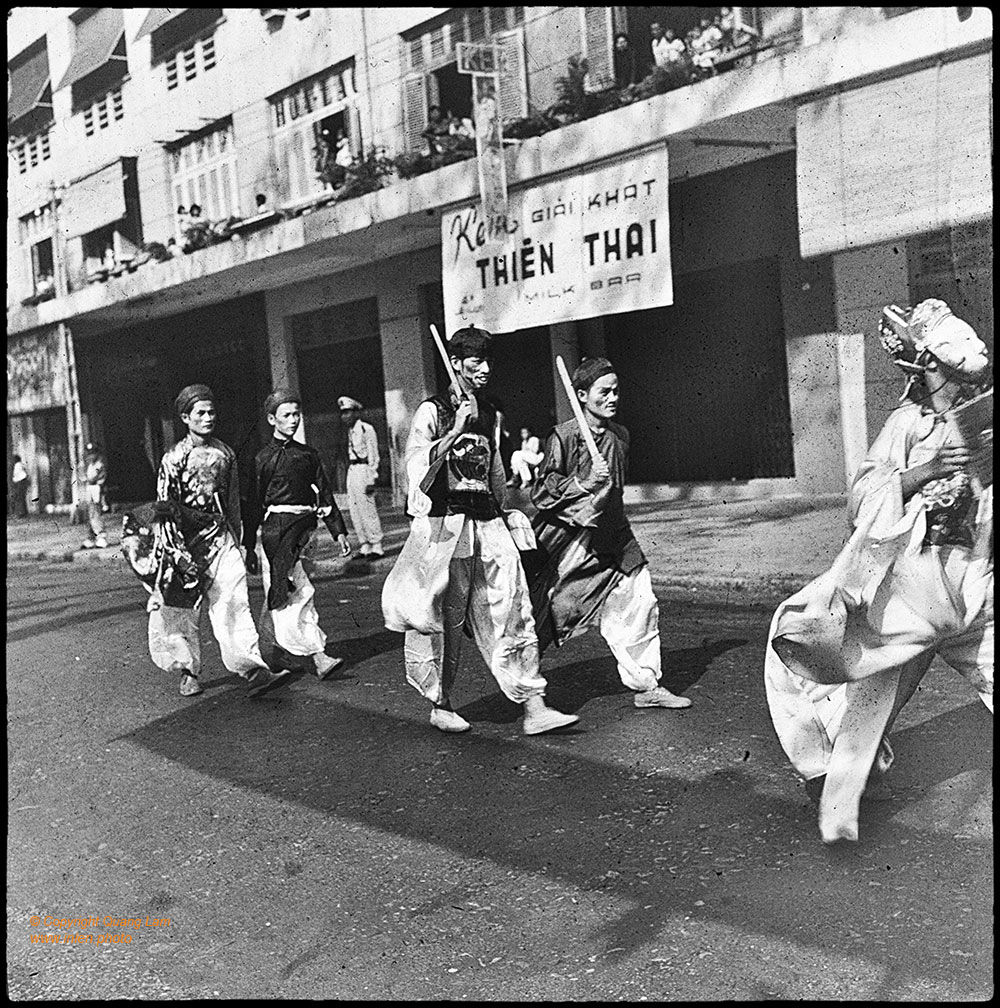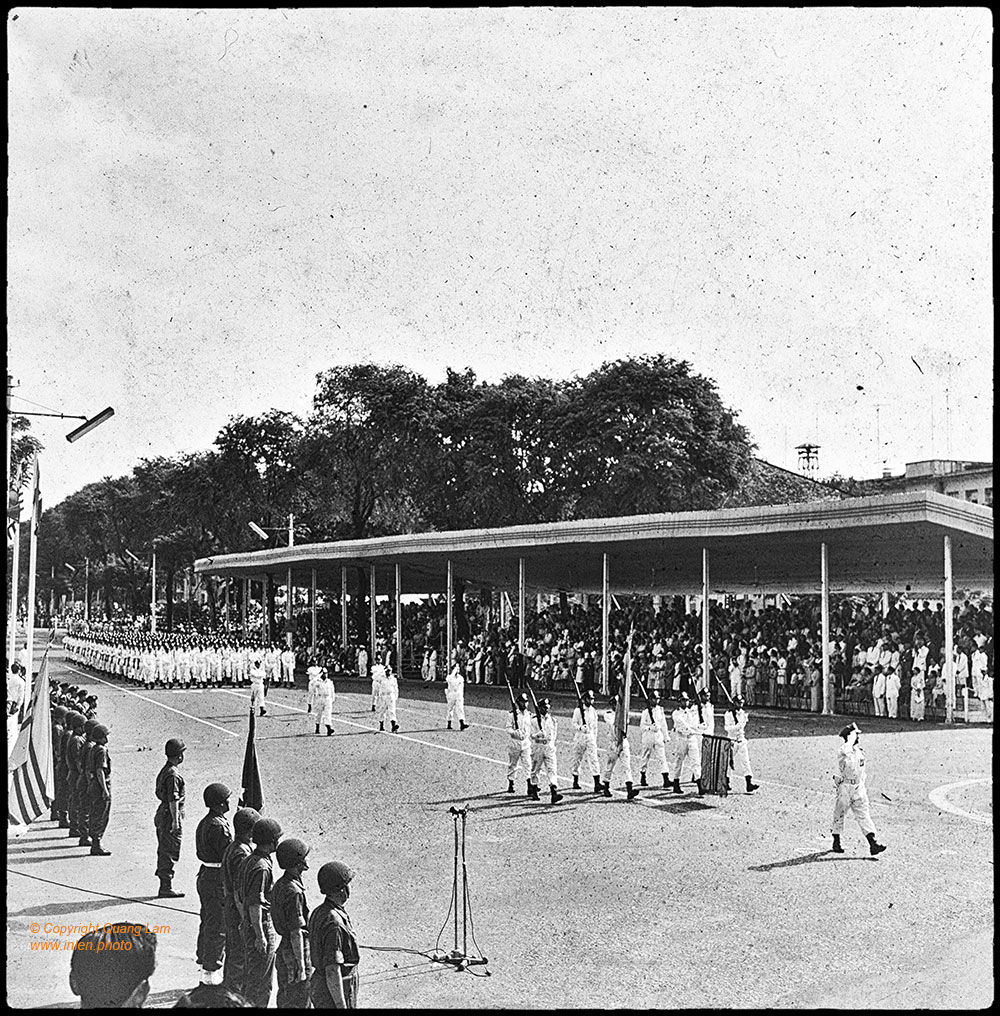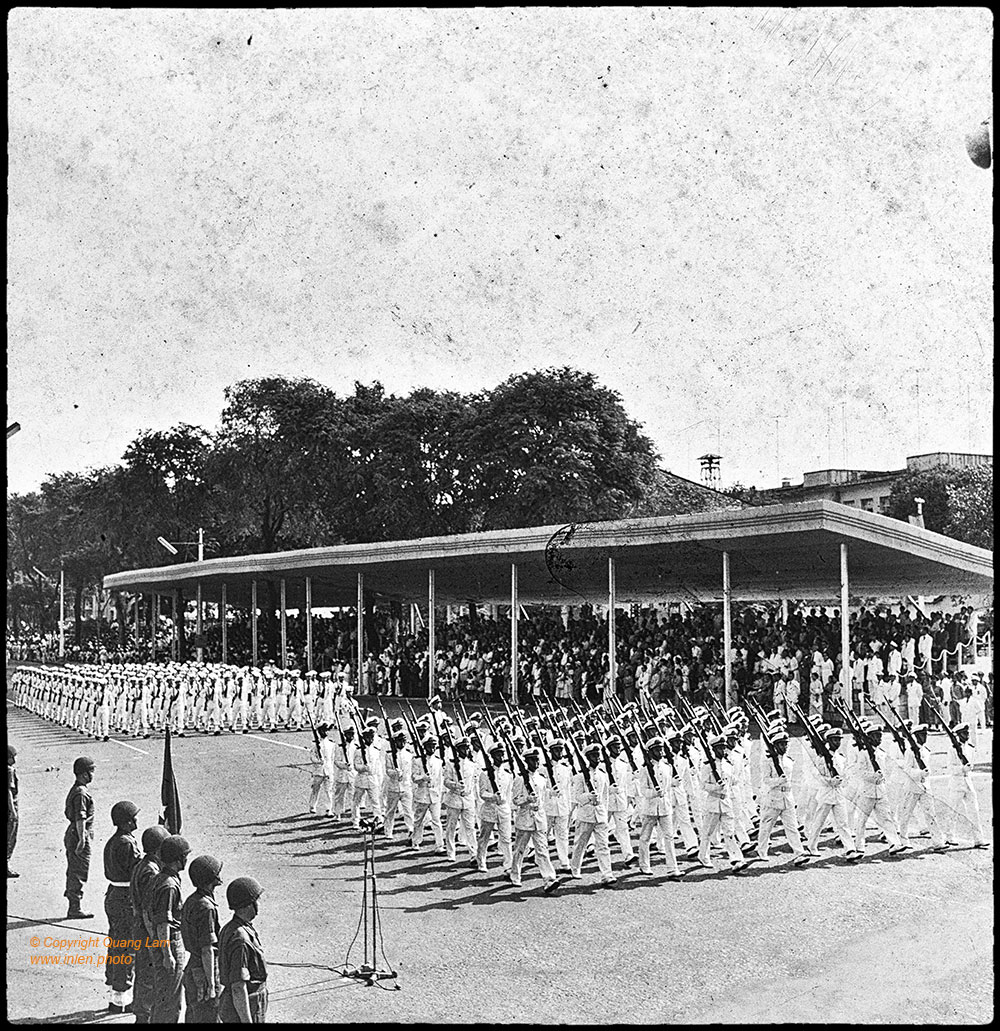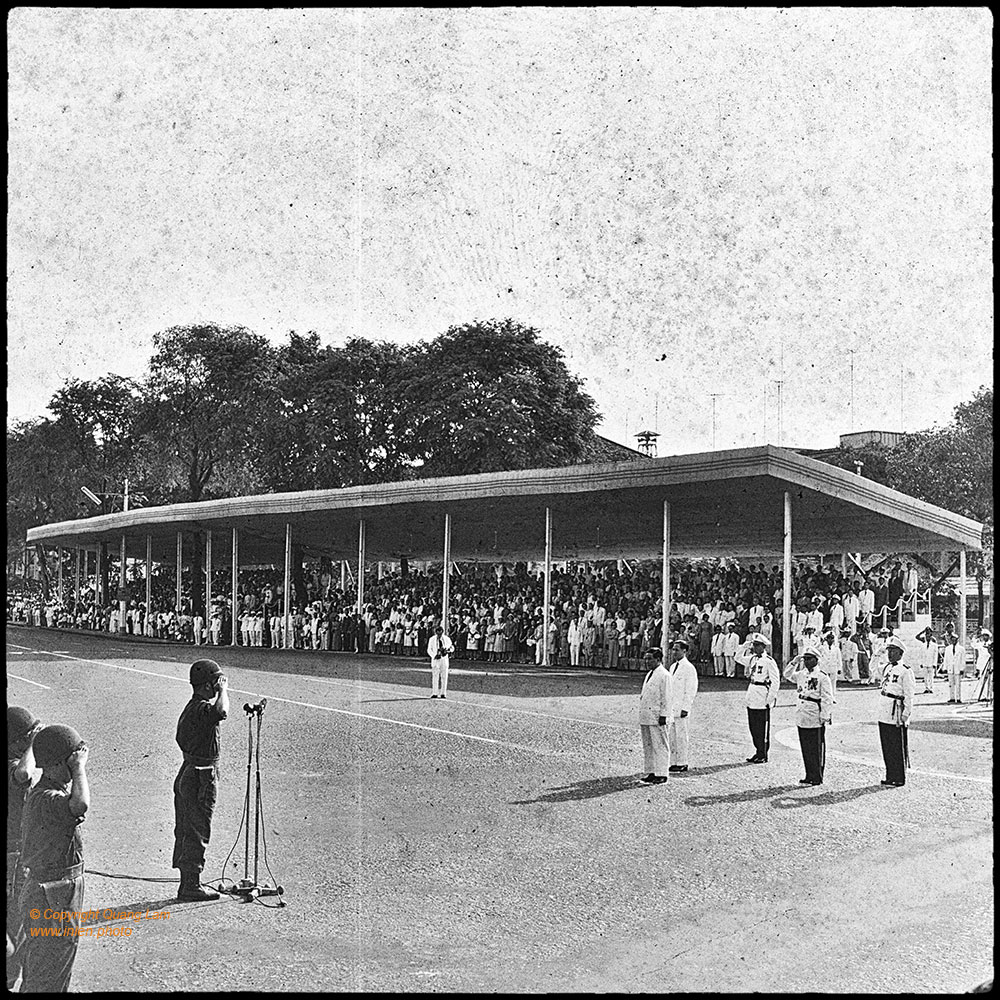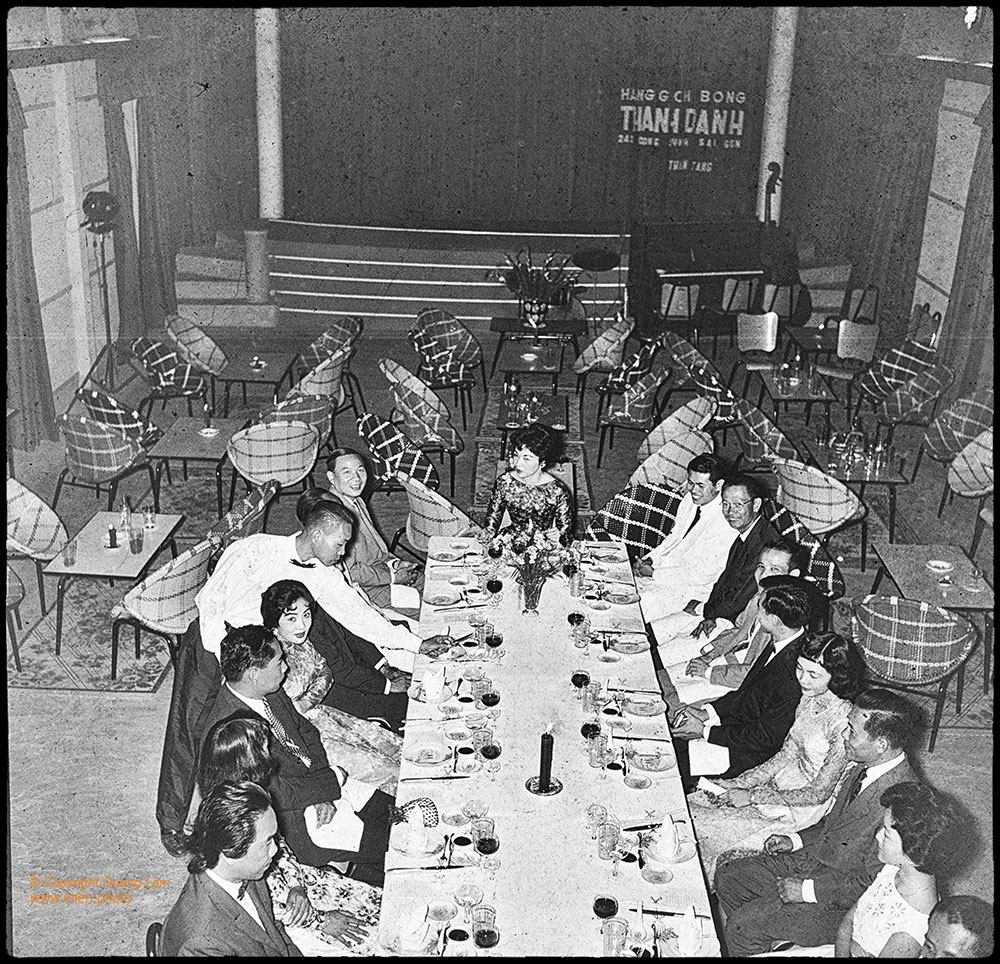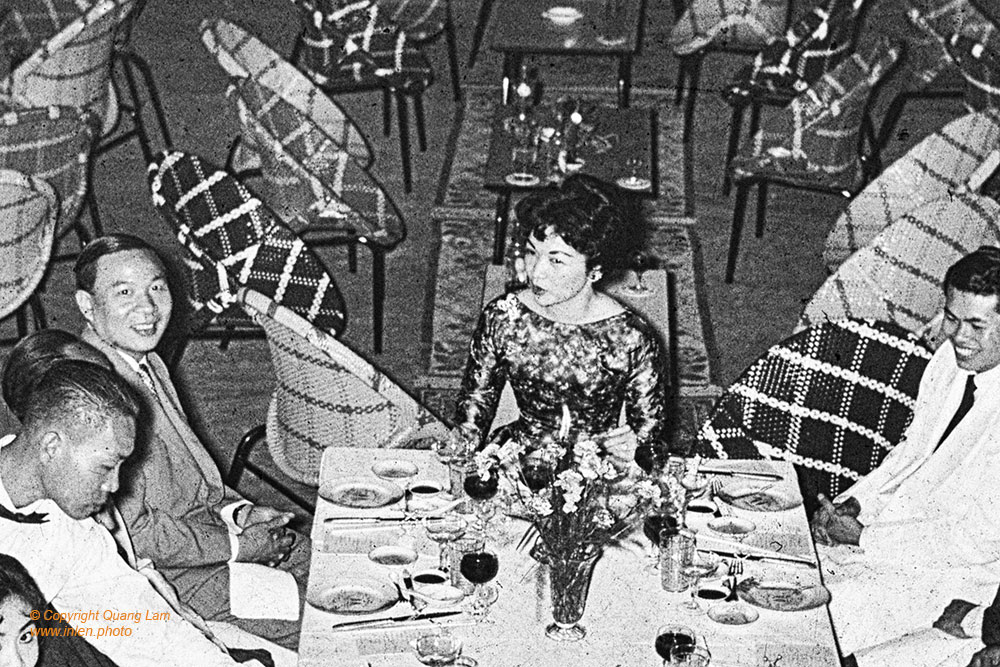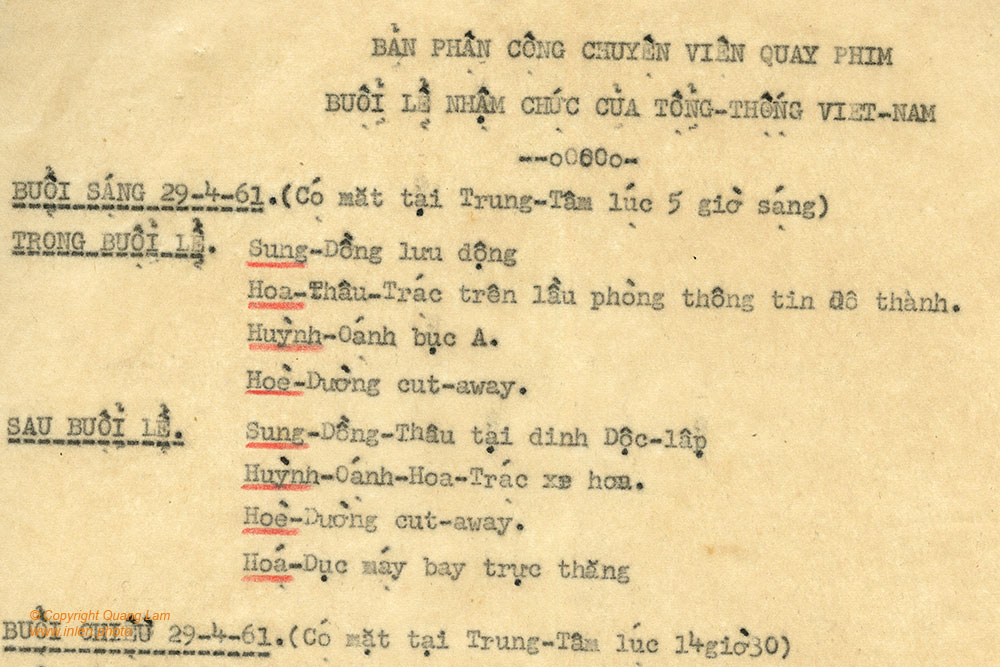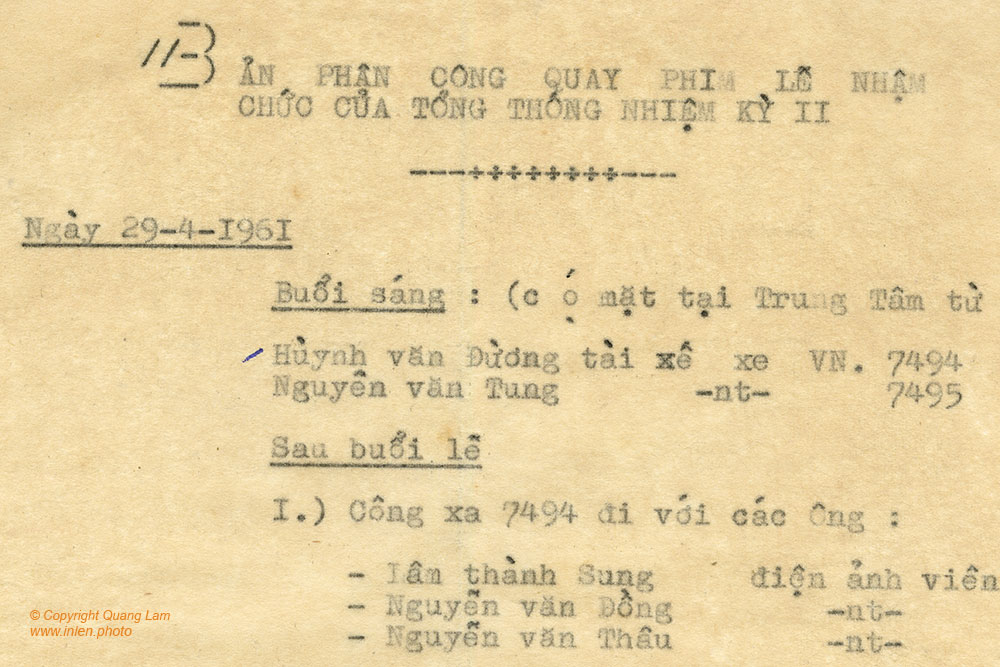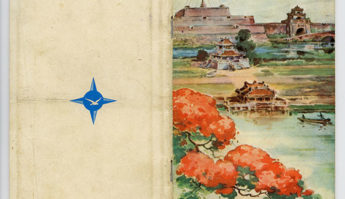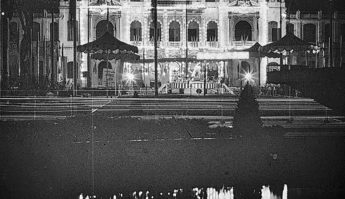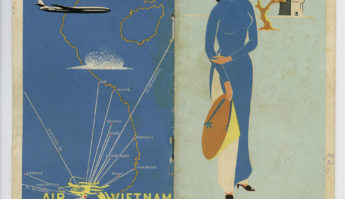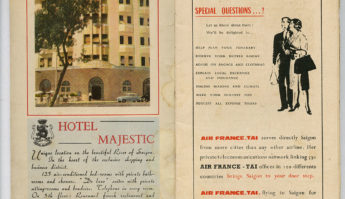Vietnam War – Inauguration ceremony for the second term of President Ngo Dinh Diem on the 29th april 1961
About the Inlen gallery’s archives photos
This captivating series, preserved within the gallery’s archives, offers a fascinating glimpse into the pomp and circumstance surrounding the inauguration of Ngô Đình Diệm’s second term as President of South Vietnam on April 29, 1961. The impressive military parade unfolded along what was then Reunification Boulevard (now Le Duan Boulevard). Alongside the military personnel and imposing tanks, traditional costumes paraded, with even the presence of elephants adding a unique dimension to the spectacle.
The series also offers a more intimate look at the post-parade celebrations. One photograph shows the dinner with President Diệm’s family and government figures. Notably present is Madame Nhu, the de facto First Lady of South Vietnam from 1955 to 1963, the influential wife of Ngô Đình Nhu, President Diệm’s brother and principal advisor.
These historically significant photographs were taken by Lam Thanh Sung, the cameraman for the press service. The gallery’s archives also retain the detailed schedule of the broadcast team covering this event, offering a behind-the-scenes look at the media’s role in documenting this moment in South Vietnamese history.
.
Keys about President Ngô Đình Diệm’s political career
Ngô Đình Diệm’s political career was marked by a rise to power as a nationalist leader who became the first president of South Vietnam, followed by an increasingly authoritarian rule that ultimately led to his assassination.
Initially, he served in the French colonial administration but resigned in protest over their lack of commitment to Vietnamese autonomy. After years of self-imposed exile, he returned to become Prime Minister of the State of Vietnam in 1954 amidst the country’s division. With US backing, he consolidated his power, rigged a referendum to oust Emperor Bảo Đại, and established the Republic of Vietnam in 1955, becoming its president.
His presidency was characterized by staunch anti-communism, favoritism towards the Catholic minority, nepotism, and suppression of political dissent. While he received significant US support in the early years, his autocratic style and discriminatory policies, particularly towards Buddhists, led to growing internal opposition and international criticism. Despite some efforts at land reform and infrastructure development, his rule became increasingly isolated and unstable.
Ultimately, a military coup, with tacit US approval, overthrew and assassinated him and his brother in November 1963, marking a significant turning point in the Vietnam War. His legacy remains controversial, viewed by some as a nationalist and anti-communist figure, and by others as a divisive and repressive leader whose actions contributed to the escalation of the conflict.



